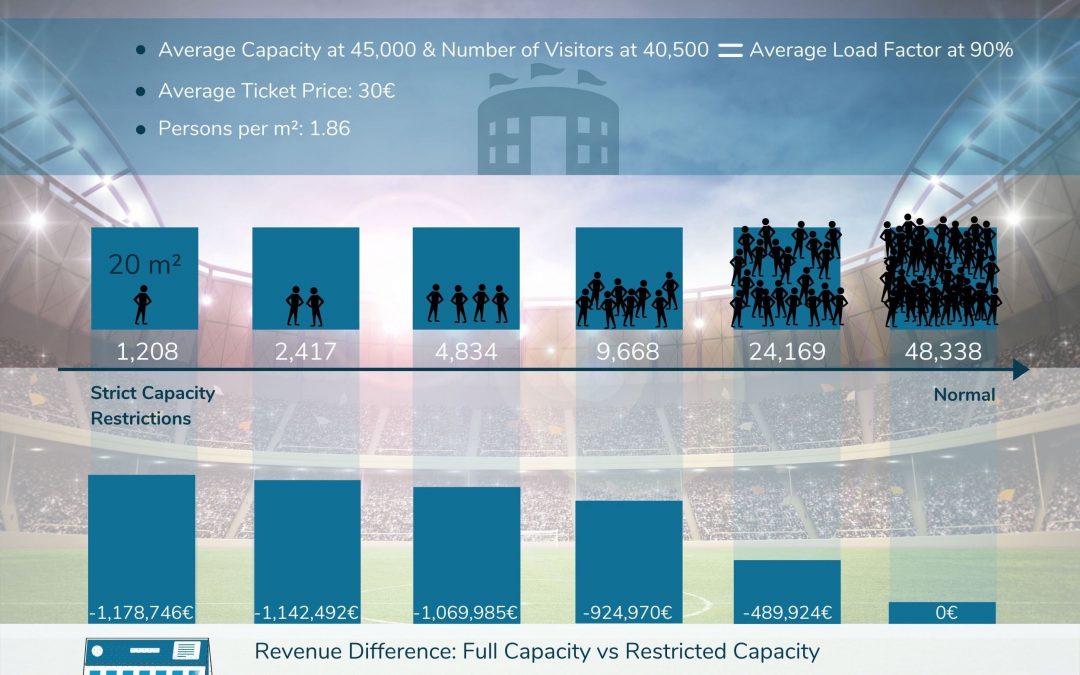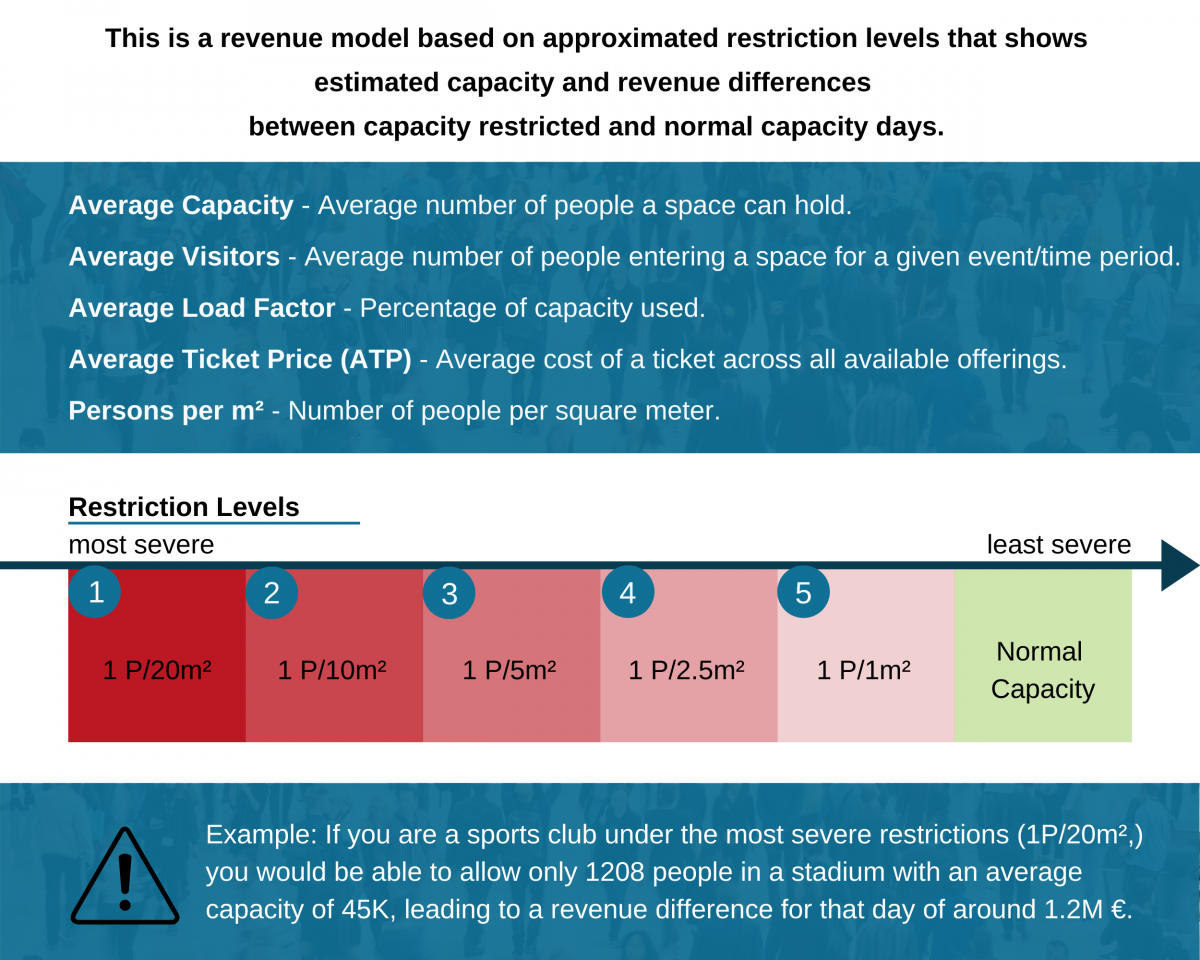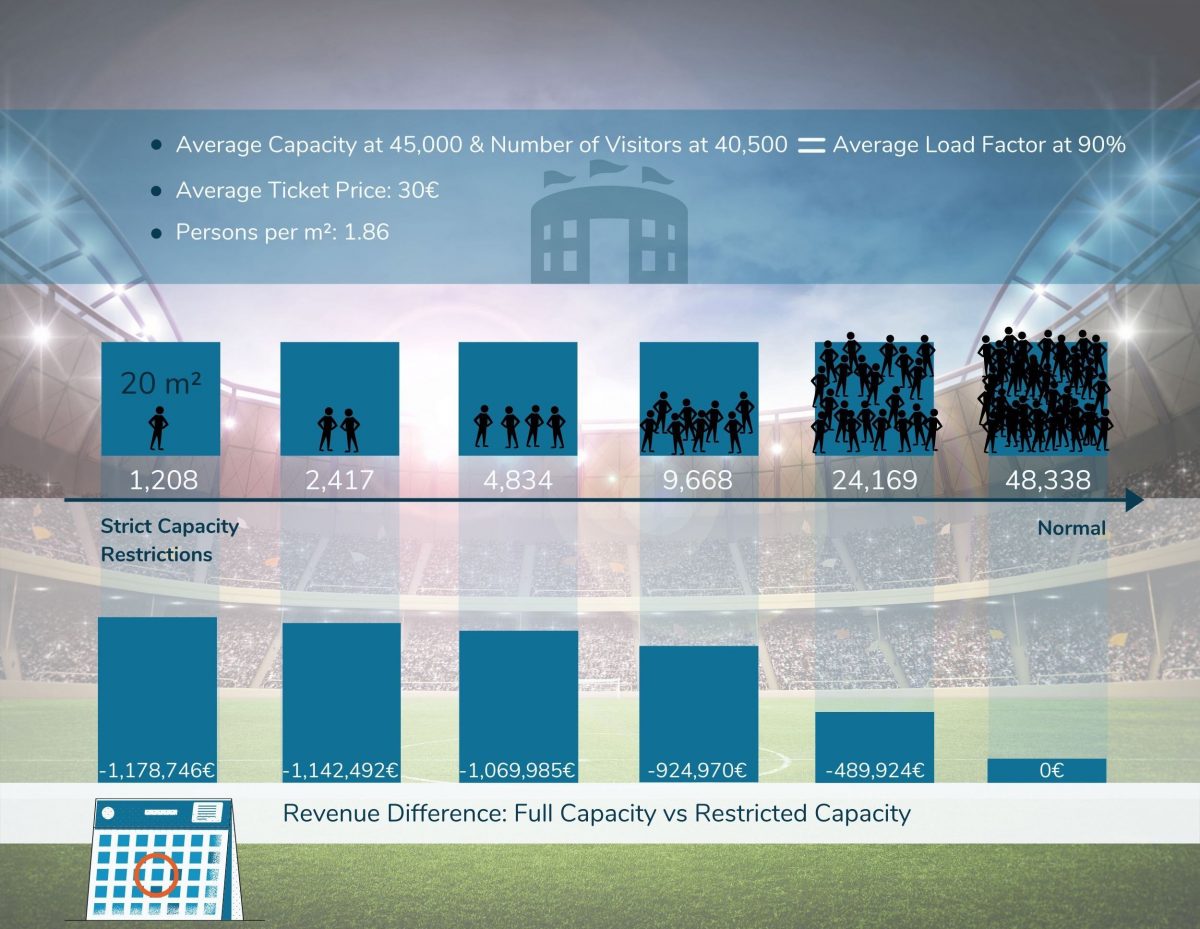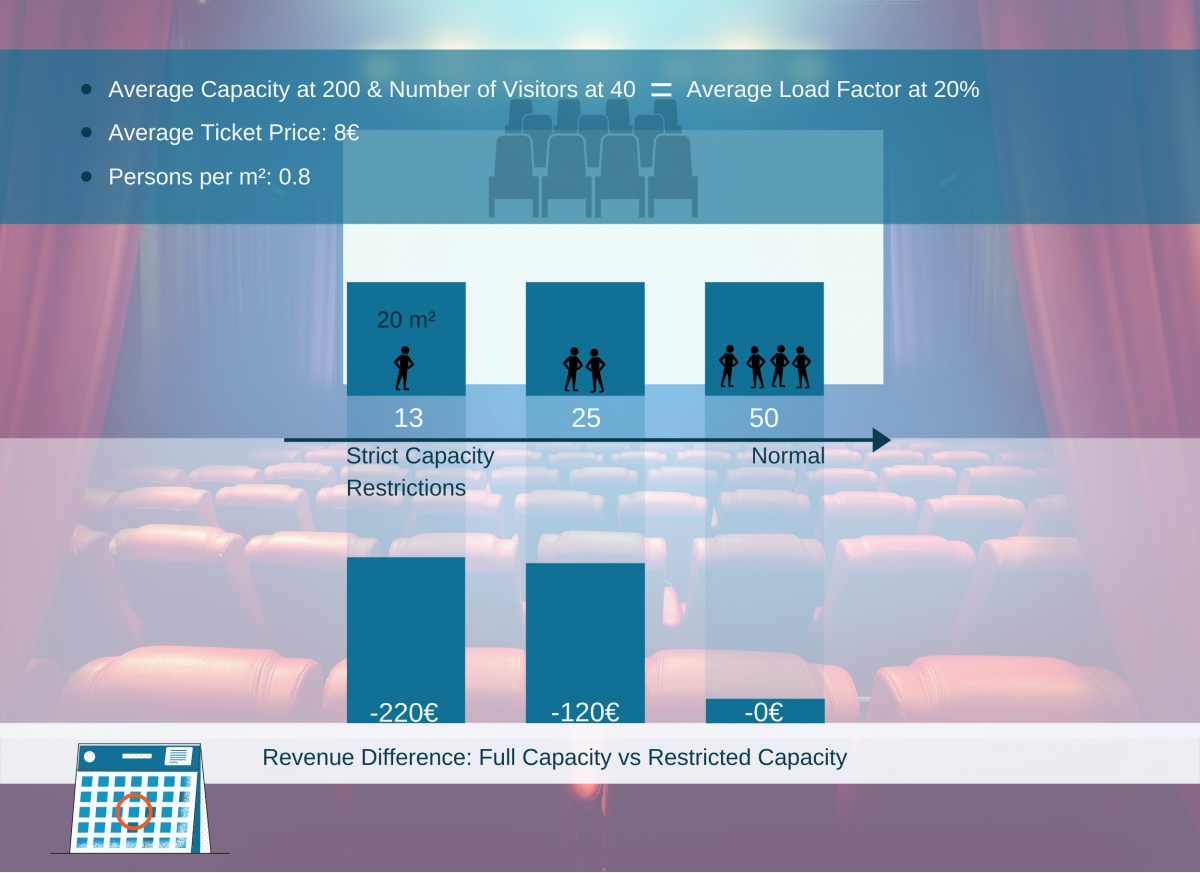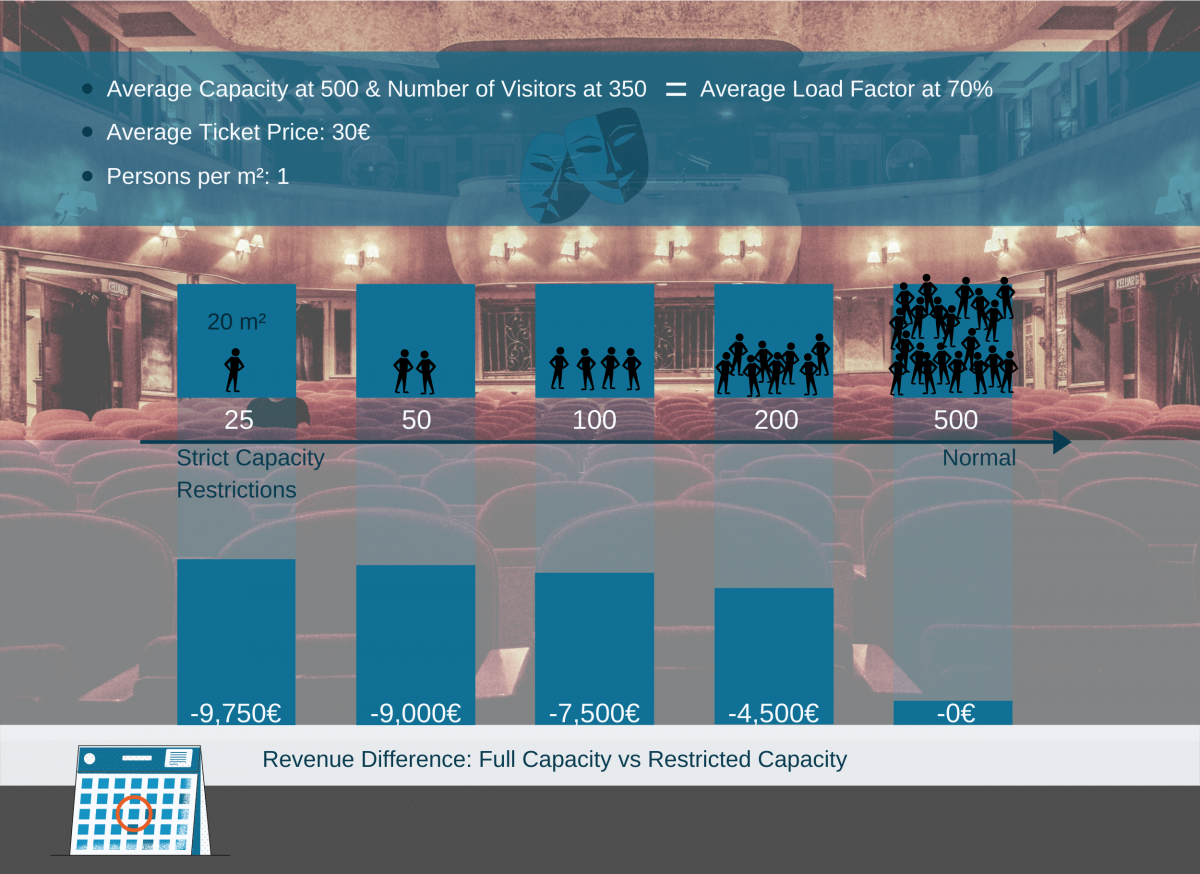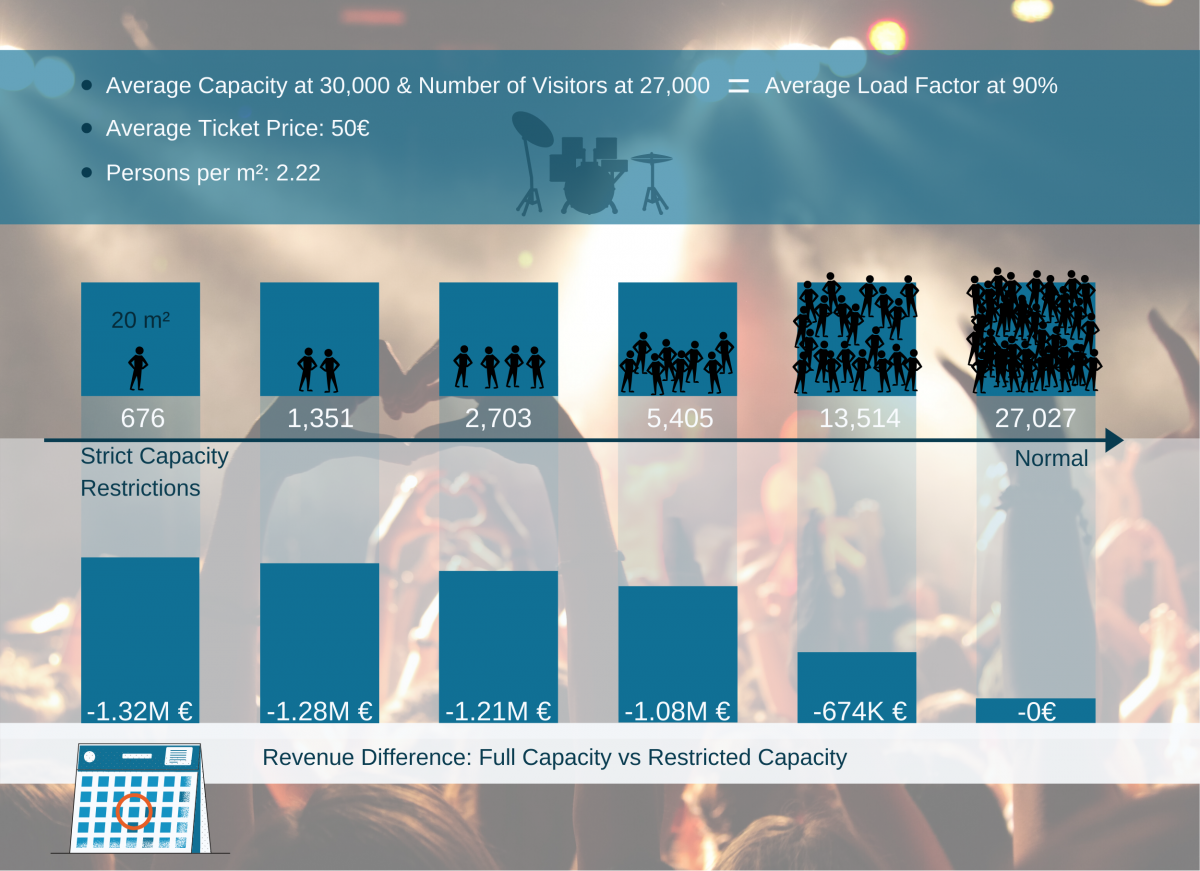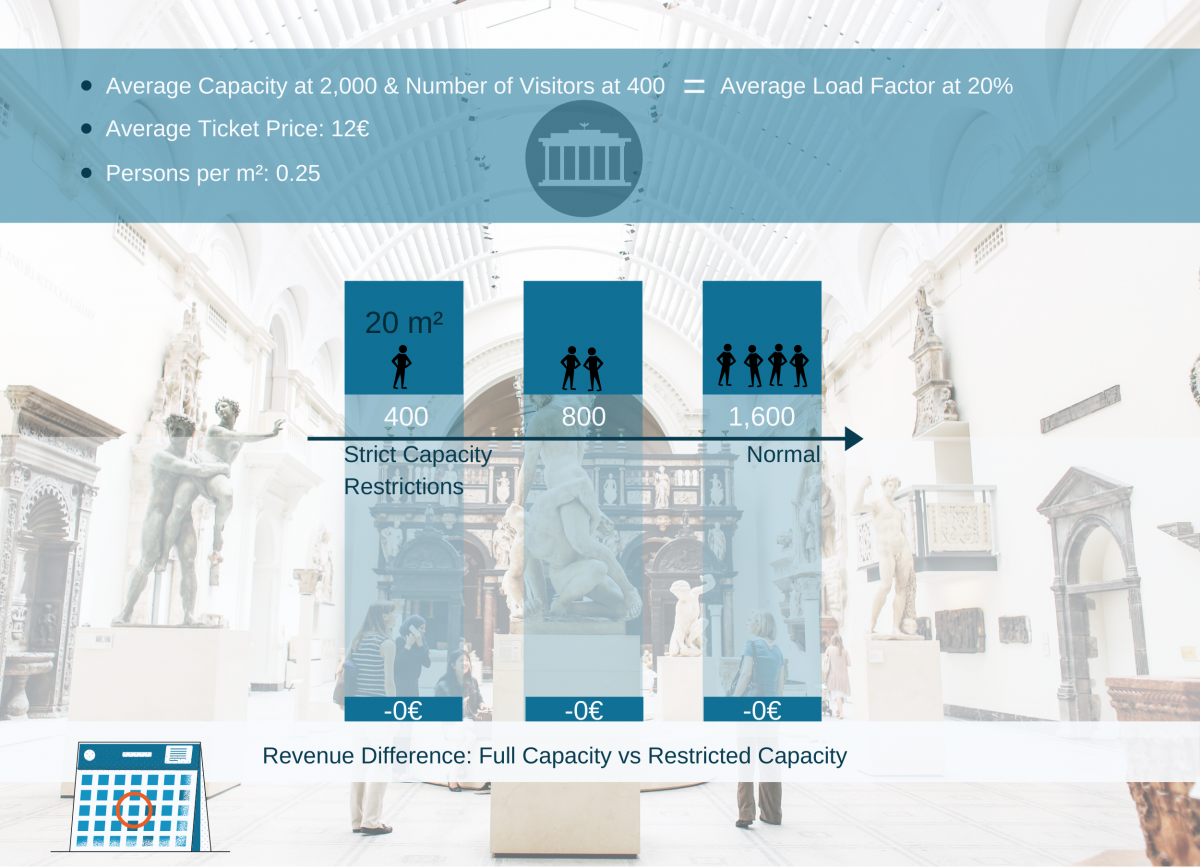The grand reopening
Germany is restarting, with businesses opening slowly and people beginning to venture out. In our previous posts we discussed how the government is carefully limiting the size of gatherings to protect both workers and the general population. Now, as promised, here is our view on how to make the capacity restrictions work for your business. Last week I introduced various operational processes that if implemented can help manage your business during the restrictions.This week I will present two important KPIs that, alongside our cross industry capacity and revenue model, provide a guide to how many people your business can support as well as the approximate revenue difference between a capacity restricted day and a normal business day. This model was developed by our ticketing industry experts to provide you insights into the revenue potential available while your capacity is restricted as well as ways to cover your operational costs and keep your business alive. The model will be detailed below, but for now let us take a closer look at these KPIs.
How to measure success
As we investigated our restricted capacity model, we identified two key metrics necessary to implement a functional capacity management process. These are People per Square Meter (P/m²) and Persons per Hour (P/HR). The first represents people density, or how many people can be in your space at a given time, and is based on the size of your store or event space. The second represents the number of customers or attendees that can enter your space per hour and is useful for operational planning. While both metrics are necessary for your capacity management process, we chose to focus on P/m² as it allows you to analyze the safest and most efficient way to open your space. P/m² is easily managed using strategic pricing and therefore can be a good indicator of how much potential revenue is available at a given level of capacity restriction.
Business case
To refresh your memory, capacity management is a process by which businesses can use pricing to manage how many people access their store or event space. The model below is a cross industry model based on an expected incremental increase in capacity over time. Our consultants researched different government imposed capacity limits and restriction relief time scales to show an average set of capacity restrictions. Please note the models below are based on industry averages. If you would like more information or are interested in a closer look at predictions for your business please reach out to us at info@smart-pricer.com.
The time is now
It is important to understand the impact of these restrictions on your business so that you can ensure your ability to reopen and earn revenue while maintaining a healthy environment for your customers and staff. Carefully managing your supply and demand are crucial for the success of your business. The crisis has caused a short term increase in disposable income which may lead to a spike in demand as things open, but there is a longer term risk that the trend could reverse. Offers and prices need to reflect your customers willingness to pay, so being flexible and aware of the current restrictions is imperative. A surge in demand can also increase the risk of price gouging, meaning actively monitoring purchasing and activity on secondary markets is also important. All in all, understanding your allotted capacity to determine how and when to reopen your doors will help everyone move on from this crisis and help your business to come out ahead.
Look for more soon on capacity models for other industries like Ski, and how fixed and variable costs impact your capacity management process.
Stay safe and healthy!

Franz Blechschmidt
Managing Director Smart Pricer
n.a. (2020). Corona-Krise: Ab wann Buchhandlungen wieder öffnen dürfen. In: Börsenblatt, 20. April. https://www.boersenblatt.net/2020-04-20-artikel-corona-krise__ab_wann_buchhandlungen_wieder_oeffnen_duerfen-die_laenderregelungen_im___berblick.1848971.html.

